Catalogue > List by artist
Browse the entire list of Rencontre Internationales artists since 2004. Use the alphabetical filter to refine your search. update in progress
Riccardo Iacono
Catalogue : 2006More Light | Art vidéo | dv | color | 4:55 | United Kingdom | 2004
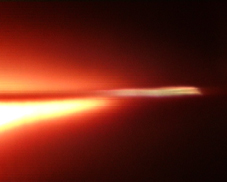
Riccardo Iacono
More Light
Art vidéo | dv | color | 4:55 | United Kingdom | 2004
An improvised video meditation on time, place and the situation of seeing. Made using the camera as performance instrument. Composed in one take.
riccardo iacono studied Painting at Glasgow School of Art, and Electronic Imaging at Duncan of Jordanstone College of Art Dundee. His works range from abstract painted film and digital animation to video collage, performance and installation. Recent screenings and exhibitions include: `A Century of Artists Film in Britain` at Tate Britain (2003); `Ice In The Freezer` a one person show presented by Pleasure Dome, Toronto (2003); `Love Songs From A Dark Body` a retrospective at La Enana Marron, Madrid (2005); `From Memory` a one person show at Kino Oko, Prague (2005) TIE International Experimental Cinema Exposition, Denver (2005)
Yurie Ido
Catalogue : 2006I just You | Animation | dv | color | 2:56 | Japan | 2003
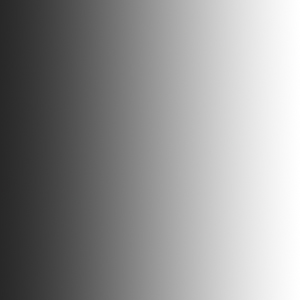
Yurie Ido
I just You
Animation | dv | color | 2:56 | Japan | 2003
______
______
Ricardo Iglesias, Mario RUIZ
Catalogue : 2009Evolutional machine, un robot autista | Multimedia installation | | color | 0:0 | Spain | 2007

Ricardo Iglesias, Mario RUIZ
Evolutional machine, un robot autista
Multimedia installation | | color | 0:0 | Spain | 2007
The device by Ricardo Iglesias and Mario Ruiz, "Evolutional Machine, an Autistic Robot," examines the confrontation between two worlds and the interferences they produce: the technological world and the world of living beings. The technological sphere is inhabited by a series of robots each with different functions depending on their programs, independent of the influence of living beings. Here, the frontier between the two worlds blurs. A relationship is established through a capturing and retransmission device contradicting the expected relationship between the observer and the observed. In space, on the screen and on the web, "Evolutional Machine, an Autistic Robot" establishes a man-machine relationship based on reciprocal interaction. Both elements belong to a unique logical system, contrary to what usually takes place within the logic of the subjugated and subjugation. Agent status, we become an intrinsic element in the relationship's logic.
Takahiko Iimura, Kazuyo YASUDA
Catalogue : 2006The Stones Have Moved | Experimental video | betaSP | color and b&w | 7:30 | Japan | 2004
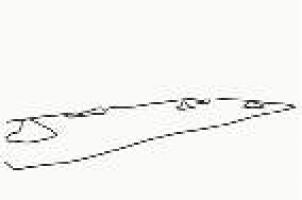
Takahiko Iimura, Kazuyo YASUDA
The Stones Have Moved
Experimental video | betaSP | color and b&w | 7:30 | Japan | 2004
"An animated film using filmed images combined with computer graphics and the traditional one-stroke drawing technique ippitsu ga."
Takahiko Iimura is a groundbreaking Japanese film- and video-maker. Like Jonas Mekas in New York, Iimura, in Tokyo, was instrumental in bringing together and organizing Japanese independent and avant-garde filmmakers and events in the early 1960s; he also played the dual role of organizer and filmmaker himself. Takahiko IIMURA`s Early Conceptual Videos are one of the starting points of Japanese video art. After coming back from New York in 1969, Taka Iimura started video production in Tokyo. Working in experimental film since the early 1960s, he first combined the art of film with video thus making a kind of flicker effect in video The Japanese concept of ma is something that was not so familiar to me. The meaning of the word ma was not clear, yet we use it in many situations. It was, indeed, a very mysterious word. To be frank, I thought it was too Japanese to handle. However in the 1970s I found an interest in the concept of ma as I was thinking a lot about the concept of time in film. Because time in film is considered duration rather than "clock time" of N+1. It is the kind of duration that Henry Bergson called duree. This concept was a starting point in making this film. - TI
Jan Ijäs
Catalogue : 2018Sosiaalinen yhteys (Social Connection) | Experimental fiction | hdv | color | 12:58 | Finland | 2016
Jan IjÄs
Sosiaalinen yhteys (Social Connection)
Experimental fiction | hdv | color | 12:58 | Finland | 2016
The film’s dialogue has been copied from online forums as is, with no editing. Many times these “ faceless ” online conversations end up to a very surreal limbo.
Media artist and filmmaker Jan Ijäs lives and works in Helsinki, Finland. Ijäs works with documentary, fiction and alternative film. The films of Ijäs deal with serious and difficult social themes, like migration into foreign and hostile societies. Ijäs`s films have been shown very widely abroad by over a hundred film festivals and as installations in museums and galleries.
Jan Ijäs
Jan Ijäs
Catalogue : 2014Two Islands | 0 | 0 | | 5:58 | Finland | 0
Jan IjÄs
Two Islands
0 | 0 | | 5:58 | Finland | 0
Two Islands is a film about two enormous waste dumps in Staten Island and Hart Island, NYC. One is a now closed landfill, which at one point was the largest in the world, the other is a cemetary of unidentified people, still in use. Two Islands bluntly asks: what does the existence of these two huge mountains of economic and social waste tell about our civilization, and what kind of legacy will the archaeologists see in them when they are studying these a few centuries from now?
Filmmaker and media-artist Jan Ijäs (b. 1975) is a artist of lens-based art, both still and moving. The films of Ijäs tend to break the traditional boundaries of fictive and documentary films. Ijäs?s work is often displayed as gallery installations rather than in traditional movie venues incorporated with still images and text works. Ijäs?s, sometimes even humorous works, deal with serious and difficult social themes, like migration into foreign and hostile societies. Ijäs?s films have been shown very widely abroad by movie festivals (over hundred) and art museums.
Catherine Ikam
Catalogue : 2013Nam June Paik plays piano pieces | Video | dv | color | 12:32 | France | 2012
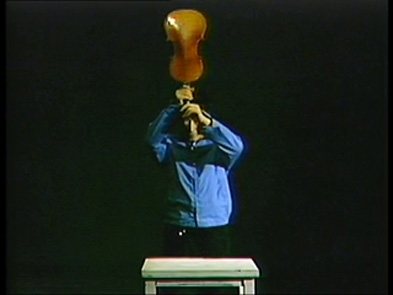
Catherine Ikam
Nam June Paik plays piano pieces
Video | dv | color | 12:32 | France | 2012
.
Catherine Ikam travaille depuis 1980 sur le concept de l?identité à l?age électronique et plus particulièrement sur les thèmes de l?identité et de l?apparence, du vivant et de l?artificiel, de l?humain et du modèle. Elle est considérée comme l?un des artistes pionniers dans le domaine des nouvelles technologies en Europe. En 1980 elle crée au Musée National d?Art Moderne du Centre Georges Pompidou un parcours sur le thème de l?identité, itinéraire à travers les accidents de la représentation de soi ; avec Fragments d?un Archétype et Identité III, elle introduit la fragmentation dans les installations vidéo (Nam june Paik Videocryptography 1980). Catherine Ikam a été Research Fellow au Massachussett?s Institute of Technology, auteur-producteur de programmes sur Antenne 2 consacrés aux nouvelles technologies,co- auteur avec Tod Machover d'un opéra video "Valis", coproduit par l?IRCAM et le Musée National d?Art Moderne pour le 10e anniversaire du Centre Georges Pompidou.. Elle a recu le prix Arcimboldo 2000 de la création numérique ..Elle a été artiste invité au BanffCentre for the Arts au canada en 2000 et au Studio National des Arts contemporains du Fresnoy pour l'année 2005/2006. Depuis 1990, Catherine Ikam en collaboration avec Louis Fléri réalise des installations de video numérique dans lesquelles les visiteur peuvent interagir en temps réel avec des personnages 3D et différents univers . leurs ?uvres sont présentées largement en France et à l?étranger Ils ont conçu ,notamment, L?Autre, crée en 1992 à la fondation Cartier pour l?Art contemporain,les portraits virtuels présentés pour la première fois à la biennale d?Art Contemporain de lyon,1995 : Le Messager en 1995 pour l?exposition Cités Cinés 2, à La Défense ,Alex,commandé en 1996 pour l?inauguration des nouveaux espaces de l?IRCAM/Centre Georges Pompidou , Elle réalisée en 1999 pour l?exposition Portraits :Réel/Virtuel à la Maison Européenne de la Photographie et présentée largement en France entre 2000 et 2003, le Cube (,Issy les moulineaux,) Agora 2000,IRCAM/Centre Georges Pompidou, ISEA 2000,(Paris.) Le Grand Album"(,Chalon sur saone)," Et à l?étranger ,Deutsches Museum ( Munich),Musée Seralves (Porto), Ars Electronica .Future Museum (Linz,)."Science Museum ( London ) Oscar a été crée en 2005 pour l?exposition ?Paris à Shanghai? pour l?exposition Paris à Shanghai à l?Art Museum de Shanghai. une rétrospective « Digital Diaries »a été consacrée en juin 2007 à Catherine Ikam par la Maison Européenne de la Photographie à Paris ; En 2012,elle à été invitée par le Nam June Paik Center à Séoul dans le cadre de l?exposition « Nostalgia is an extended feedback » qui a lieu de juillet 2012 à février 2013 ; Catherine Ikam prépare actuellement avec Roland Auzet un spectacle pour 2013/ 2014 sur un texte de Fabrice Melquiot « aucun homme n?est une ile «
Ryoji Ikeda
Catalogue : 2011data.matrix[nº1-10] | 0 | 0 | | 0:0 | Japan | 2006

Ryoji Ikeda
data.matrix[nº1-10]
0 | 0 | | 0:0 | Japan | 2006
Victoria Ilyushkina
Catalogue : 2007Cuba far | Experimental video | dv | color | 1:17 | Russia, Cuba | 2006
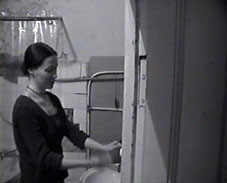
Victoria Ilyushkina
Cuba far
Experimental video | dv | color | 1:17 | Russia, Cuba | 2006
Film-joke, using a play on words. The action is in an old flat, where several families have been living together. They have one bathroom for the whole flat and nobody has wanted to repair it. Why? Because it is a common room. When you have money, you can buy your own flat and take care of it as you want.
Victoria Ilyushkina was born January 15th, 1971. She was graduated in 1995 from the Department of Painting at the Serov Art College, St Petersburg. Ilyushnika first studied at the Art History and Art Theory department of the St Russian Academy of Art Institute of Painting, then a sculpture and architecture I.E.Repina in St.-Petersburg (diploma), and then from 2003 to 2005 at the Pro Arte Institute, Foundation for Art and Culture, New Media Art Studies Program (diploma).
Eduardo Imasaka
Daniela Imhoff
Marion Inglessi
Catalogue : 2017Catastrophe | Video | hdv | color | 5:0 | Greece | 2015
Marion Inglessi
Catastrophe
Video | hdv | color | 5:0 | Greece | 2015
Catastrophe is the fatal turning point or resolution in Ancient Greek drama. The word catastrophe in Greek and Arabic bears the same weight: the catastrophe of Asia Minor, the Exodus from Palestine. When catastrophe strikes, the visual equivalent of extreme shock is to drop whatever one holds in one’s hands. The “unbreakable” Duralex glasses were created in France in the late 50’s and have today become a classic. A symbol of strength and durability, they have spread around the whole world and have been photographed in the hands of Afghan tribesmen, James Bond, and even Osama bin Laden. The “Western” glasses are shot in slow motion as they fall to the ground, bounce, alternate and merge with the more fragile Arabic tea-glasses in a silent and ultimately shared - dance of death. Letters hit the falling glassware with the rhythmic intensity of gunshots, spelling the word catastrophe in Greek, English, and Arabic (nakba). Catastrophe is a reflection on the current events in the world and the increasing loss of value of human life.
Marion Inglessi is a visual artist, scene designer, curator. Born in Athens, she lived in Ghana, Nigeria, Lebanon, Italy, France and USA. After a BA in English Literature, she received an MFA in Theatre Design from Brandeis University, Boston, U.S.A. (1986-89). She attended Istanbul Bilgi University, Turkey on an Erasmus scholarship (2010-11). In 2014 she received an MFA from the School of Fine Arts, Aristotle University, Thessaloniki. She has worked as a designer for theatre, opera, film and advertising, in New York, Paris, Athens (1989-2003). She was Head of exhibitions & curator at the Thessaloniki International Film Festival (2005-2009), for film directors Nico Papatakis, William Klein, Werner Herzog, Wim & Donata Wenders, Eve Sussman, Nuri Bilge Ceylan, Guillermo del Toro, Cao Fei, and others. In 2015 she co-created a video animation project for refugee children & adolescents in Athens shelters. She has had two solo painting and sculpture exhibitions while participating and curating a number of group shows. Her work is in private collections in Greece, France, Switzerland and Turkey and the Macedonian Museum of Modern Art. Her video Catastrophe participated in the video survey Fireflies in the Night Take Wing, at the SNFCC, Athens, 2016.
Lilja Ingolfsdottir, Sara ELIASSEN
Catalogue : 2006Not Worth It - Shine and Glow | Fiction | 35mm | color | 3:30 | Norway, United Kingdom | 2005

Lilja Ingolfsdottir, Sara ELIASSEN
Not Worth It - Shine and Glow
Fiction | 35mm | color | 3:30 | Norway, United Kingdom | 2005
Lilja Ingolfsdottir nait en Norvège en 1976. Elle étudie à la International Film School de Londres entre 1997 et 2002 et à la FAMU (Czech National Film School, Prague) entre de 2000 à 2001.
Institute For New Feeling
Catalogue : 2018Avalanche | Experimental video | hdv | color | 16:40 | USA | 2017
Institute For New Feeling
Avalanche
Experimental video | hdv | color | 16:40 | USA | 2017
Avalanche is an enhanced water beverage filtered through a human pipeline that traces the flow of water through a city and through the body. A live performance presents municipal water usage as a literal concert of bodies, a system that is improbable, arduous, and flawed. The Avalanche bottling process begins with an ice cap harvested from the Never Summer Mountain Range. The ice melts and travels through a series of human filters, eventually collecting in crystal singing bowls. The sound of this filtration is performed as a concert for a live audience, while at the same time being live broadcast back to the mountain range, causing an avalanche from the vibration of sound waves. The avalanche is bottled for consumption, while also providing new ice to begin the process again. The project consists of a one night live performance, multi-channel video and vending machine stocked with Avalanche water, all of which work together to create a mythology of the product’s source. Passing water between the city and the mountain in an endless feedback loop, IfNf`s filtration process equates the mountain spring with the trickle of water across a dirty windshield, the tears of two middle-aged men, the gargle and spit from a teenager’s mouth, juxtaposing trivial everyday gestures with the looming, dark future of a changing climate.
The Institute for New Feeling is a collective founded by Scott Andrew, Agnes Bolt, and Nina Sarnelle, committed to the development of new ways of feeling, and ways of feeling new. As a group, our identity is always shifting. Borrowing aesthetics and language from wellness and tech industries, market research, speculative design, political propaganda, we assume a familiar yet fragile voice of authority. IfNf has recently shown work at The Getty Center, LA, Ballroom Marfa, TX, MoMA, NY, Istanbul Modern, Turkey, MAAT, Lisbon, Whitechapel Gallery, London, Hammer Museum LA, Fundacion PROA, Buenos Aires, Akademie Schloss Solitude, Stuttgart, Jardin Essential, Bruxelles, Recess, NY, and Mwoods, Beijing. IfNf has been featured in Frieze, Art in America, Vogue Italy, Huffington Post, SFMoMA, Creators Project, FlashArt, and Hyperallergic.
Catalogue : 2017This is Presence | Video | hdv | color | 17:19 | USA | 2016
Institute For New Feeling
This is Presence
Video | hdv | color | 17:19 | USA | 2016
A 17-min video commissioned by Ballroom Marfa for the Artist Film International program led by Whitechapel in London. This video depicts a journey through the Institute for New Feeling’s fabricated SEO Marketing campaign, a web of interconnected sites populated with training modules, news articles, facility tours, click bait and social networking sites all linking back to the Institute for New Feeling.
The Institute for New Feeling 3 person collective committed to the development of new ways of feeling, and ways of feeling new. As a group we assume the authoritative voice of the Institution, borrowing from the language of corporate branding as well as that of mainstream medicine, therapy, health and beauty. Our work takes the form of treatments, therapies, retreats and wellness products. We are interested in the wellness industry as a shifting, slippery intersection of capitalism, technological innovation, and the body. IfNf has recently shown work at Ballroom Marfa, TX, Istanbul Modern, Turkey,Museum of Modern Art, NY, MAAT, Lisbon, Whitechapel Gallery, London, Hammer Museum, Los Angeles, Fundacion PROA, Buenos Aires, Akademie Schloss Solitude, Stuttgart, Kevin Space, Vienna, Jardin Essential, Bruxelles, Recess, NY, and Akademie Schloss Solitude, Stuttgart.
Arne Intveen
Catalogue : 2013etwas. | Video | | color | 5:54 | Switzerland, Germany | 2011

Arne Intveen
etwas.
Video | | color | 5:54 | Switzerland, Germany | 2011
Carlos Irijalba
Catalogue : 2026Wanderers | Experimental doc. | 4k | color | 3:38 | Spain, Netherlands | 2025
Carlos Irijalba
Wanderers
Experimental doc. | 4k | color | 3:38 | Spain, Netherlands | 2025
Wanderers is a film centered in the way that matter (and our bodies as a result) are driven by magnetism, pulse or rhythm carried by the earths inertia. A primal movement of mineral origin, pre-life and pre-human. To do so, the film casts a universal perspective on the dynamics of birds, migration of bodies, and humans fascination with flying as a challenge for those laws. The film covers this abstract notion with two different contemporary phenomena, modern falconry flown on commercial airplanes and the passion of RC Replica airliner pilots, depicting the dichotomy between natural evolution, our physical materiality and the detachment from mundane reality and general force and gravity, those.
Carlos Irijalba Pamplona (SP) 1979 Resident at the Rijksacademie Van Beeldende Kunsten (Amsterdam) in 2013/2014, and Graduated at the UDK University with Professor Lothat Baumgarten, Irijalba has been awarded multiple art prizes like in 2023 the NYC Culture Pair Program with the Department of Design and Construction DDC, the Mondriaan Fonds 2022 in Amsterdam, the Sifting Foundation Art Grant 2015 in San Francisco y Marcelino Botin 2007/08 among others. He exhibited internationally in the Shanghai Biennale 2021, CAB Art Center Brussels, Guangzhou Triennale 2017 or MUMA Melbourne in Australia. To the question “Does the world need this new object?”, most of the times the answer would be “no”. Therefor the work of Irijalba moves by the principle of pertinence, trying to remain context responsive. In projects like Skins (2013), Hiatus (2022) and Pannotia (2016-ongoing) he works with geology and industrial time sensitive materials that give us perspective on the dominant narratives in Western history. His work is present in public collections as Museo Nacional Reina Sofia, The Netherlands National Collection, Sammlung Wemhoener Foundation in Germany, the Taviloglu Art Collection in Istambul and Acciona Foundation in Spain. His presence on private collections internationally is extensive in both North and South America, Europe and Asia like collection Pilar Citoler, Kells Collection, David Breskin Collection among many others.
Catalogue : 2013Inertia | Video | hdv | color | 4:20 | Spain | 2012
Carlos Irijalba
Inertia
Video | hdv | color | 4:20 | Spain | 2012
INERTIA. Device and residue. Just as an eye blink denies the presence of a specific space or time within a continuum, so a frame freezes a particular place and moment. It is the indivisible unit of the audiovisual mechanism, and its basic inductor is light. Thereby begins a journey that takes us from the real to the represented, finally leading us to that ultimate reality, the document. Inertia deals with the construction of reality. The route is a place and the vector imposes itself on the object. The present then tends to disappear in a continuous movement and what happens is indeed its non-presence. Over its four-minutes length, Inertia responds to the conventions of rhythm, visual axes, and other narrative norms with the rules that we use to assimilate the entire audiovisual spectrum. There occurs a specific accident between the fragile rules of narration and the sophistication of what is staged, confronted with the inescapable physical connotations of gravity, weight, or the volume of the elements in its service.
Carlos Irijalba (Pamplona, 1979) graduated in 2002 at the Fine Arts Basque Country University and studied at UDK Berlin is actually resident at Rijksakademie Amsterdad. Awarded Purificacion Garcia photography first Prize and the Revelation PhotoEspaña Prize among others, he also received the Guggenheim Bilbao Photography grant in 2003 or the Marcelino Botín Foundation in 2007/08. Irijalba has exhibited at international Art Museums, including the CCCB Barcelona or Herzliya Museum Israel. In projects as Unwilling Spectator (2010) or Inertia (2012) works between relative experience of time and space and the collective construction of the real.
Carlos Irijalba
Catalogue : 2011Unwilling Spectator | Art vidéo | 0 | color | 5:21 | Spain, China | 2010
Carlos Irijalba
Unwilling Spectator
Art vidéo | 0 | color | 5:21 | Spain, China | 2010
The tendency towards negation of space in favor of certain hegemony of the temporary has developed into a strategic reality of economic and political connotations of global character. Nowadays, the gaining of time is an exclusive question of vectors, and territory gives up its significance for the benefit of the projectile. The approaches developed in recent projects like Switch off all devices (2006) or Twilight (2008) observe a patent capitalization of space and movement. Space is being equated and even gets dispensable, while gesture or orientation are gaining and acquire visual nature. The path is a spot and the vector imposes itself on the object. Thus the present tends to disappear in an incessant movement bringing about its non-presence. This project proposes a real intervention on the spot of this conflict. Fast traffic lanes and their speedways materialize the place of topographic decommitment and the implementation of coercion or commitment to movement, in and endlessly traveled loop. Contradiction, the existence of isolated deserts within this circulation circuit takes shape in the true miniaturized forests inside, which have been reduced to a symbolic function, whose experience as a place is not accessible any longer. Issues like scale or tangibility are here being disarranged. A gap opens, where radically different times succeed each other.
Carlos Irijalba (Pamplona, 1979) graduated at the University of the Basque Country and UDK Berlin. His work analizes the way in which Western culture recreates an abstract medium that loses all relations except to itself. Spectacle has marked out the plane of the visible so it can be easily digested, transferring attention towards a series of pseudo-events. Irijalba works in projects as Überlegung or the recent Twilight and Unwilling spectator in that direction between relative experience of time and space and the collective construction of the real.
Catalogue : 2010Twilight | Video | | color | 13:0 | Spain | 2008
Carlos Irijalba
Twilight
Video | | color | 13:0 | Spain | 2008
TWILIGHT. Twilight consists of the displacing of a floodlighting tower for a football pitch, a space that is hyperdefined by and for spectacle, whose descriptive lighting presents the subject of its attention as the only one that exists. This tower has been transferred to one of Europe?s last forests, Irati, in the north of Navarre, creating as a replica a redefinition of the real as visible employing the language proper to spectacle. The project is about the way in which the West constructs a circuit of the real through light. Natural lighting provides a consistent space-time dimension, while the West?s approach to light, in contrast, goes beyond the manufacture of an eternal day to rupture structures and cycles towards the construction of an abstract medium that loses all relations except in relation to itself. Fire as the first artifice and, later, artificial light have symbolised the place of transformation. Spectacle has inherited the place and hypnotic qualities of fire and has marked out the plane of the visible so that it can be digested, transferring attention towards a series of pseudo-events. Representation of place is now insufficient. The project poses this installation as the need for the real beyond its image. The last place is the place itself.
Carlos Irijalba. Biography Carlos Irijalba (Pamplona, 1979) graduated in 1998 from the Pamplona School of Art and went on to continue his training at the University of the Basque Country where he obtained his Fine Arts degree. He also studied in Berlin at the Universität der Kunst with artist and professor Lothar Baumgarten and actually has a studio residence at ISCP New York. In 2004 he received the First Award for Young Artists, as well as a photography grant from the Guggenheim, to which must be added a Plastic Arts Grant from the Fundacion Marcelino Botín in 2007 and the Purificacion Garcia Photography Award. Carlos has exhibited at national and international Centres, including the CCCB in Barcelona, Miami, New York,Tokyo and Beijing. In previous projects, such as ?Outside comes first? or ?Devices? (both in 2007) he had already worked on the distortion of the construction of reality in the West. So, with Twilight he continues to delve into our understanding of and approach to reality, and spectacle. He is currently developing a photograph and video project in Beijing entitled Dromocracia.
Adla IsanoviĆ
Catalogue : 2015Images Within Us | video | hdv | color | 4:19 | Bosnia & Herzegovina | 2012
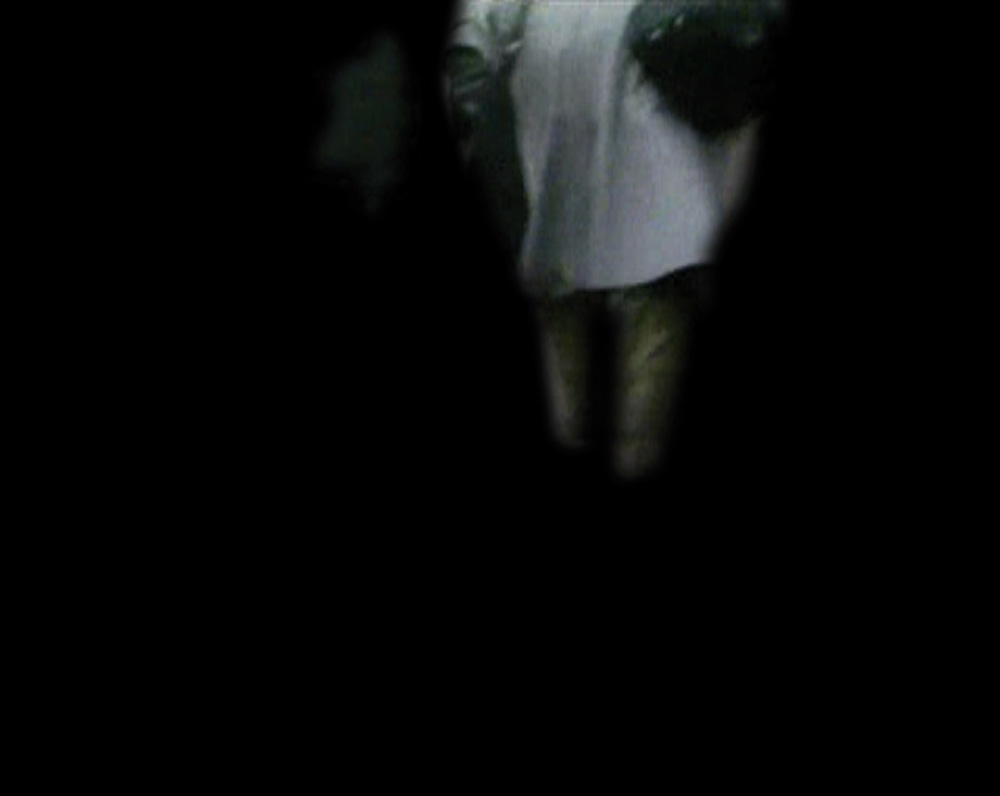
Adla IsanoviĆ
Images Within Us
video | hdv | color | 4:19 | Bosnia & Herzegovina | 2012
There is a huge amount of well-known media reports recorded in Sarajevo during the Siege (1992-1996). Media framed those events, streets, places and people into well-known images, common representations of war. Audience around the world was/is able to watch such imagery, over and over again. Adla Isanović erased the whole urban scene and context out of it, leaving only images of people. In that way, she explores how does the audience`s relationship to such imagery of people, whose context is erased-change. After pictures, what remains? What is our relationship with such images, representations, subjectivity, knowledge, with facts, feelings, emotions and experiences?
Adla Isanović Born 1977 in Sarajevo (Bosnia and Herzegovina). Lives and works in Sarajevo. She holds a MA in “New Media”, as well as a MA in “Critical, Curatorial, Cybermedia Studies” (Geneva, Switzerland). She works at the Academy of Fine Arts Sarajevo as Assistant professor on the courses on Multimedia. Furthermore, she was a visiting lecturer at the International University Sarajevo, as well as at the Academy of Performing Arts Sarajevo. Her previous engagements include a work as a researcher/analyst at the Mediacentar Sarajevo. She has been engaged on numerous local and international projects in the fields of culture and art. Her artworks were presented in Bosnia and Herzegovina, Austria, Switzerland, Slovakia, Montenegro, Ireland, Netherlands, Great Britain, Latvia, Italy, Germany, Greece, France, Canada, Japan, Columbia, etc.
Takashi Ishida
Catalogue : 2008Ema/Emaki 2 | Animation | 16mm | color | 6:30 | Japan | 2006
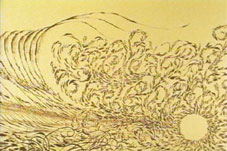
Takashi Ishida
Ema/Emaki 2
Animation | 16mm | color | 6:30 | Japan | 2006
Takashi Ishida's "Ema/Emaki 2" is composed using a series of minute-long units. In this film Ishida animates organic linear forms that grow ever upwards. Each piece of animation is then recombined with the others in a series of variations created through multiple exposures.
Takashi Ishida was born in 1972 in Tokyo. He began making films in 1995. He not only works on films but also on collaboration works with multiple fields. For example, he is working on a stage design for the dancer Nohmi Kenshi, and collaboration with the poet Gozo Yoshimasu.
Bobur Ismailov
Catalogue : 2010yuz | Video | dv | color | 6:0 | Uzbekistan | 2008
Bobur Ismailov
yuz
Video | dv | color | 6:0 | Uzbekistan | 2008
A woman takes off a veil in a hope to open her face and discover the world surrounding her. The layers of veils don`t let her to break the limits of darkness. Each time she takes of the veil we hope to see her unveiled but this freedom doesn`t arrive.
Babur Ismailov is born in Uzbekistan, where he graduated from State Art Institute. He is a member of the Academy of Fine Arts of Uzbekistan and Russia. Babur Ismailov expresses himself in painting, graphics, video installations. He worked in cinema, animation, illustration, theater proving himself as truly multidimensional artist. He took part in over thirty international exhibitions in France, Italy, Germany, USA, Russia and other countries. And presented several personal exhibitions in Tashkent, Uzbekistan and Paris, France.